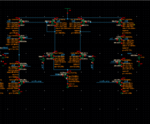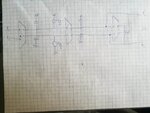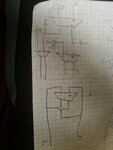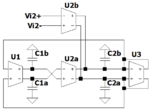sherif96
Member level 4

Oh, I misunderstood what you meant, Yes I have actually connected both circles together with the output of the non differential ota, the problem that I mentioned in my last comment was when I connected the differential ota with my non differential ota, or to be precis replacing the vcmfb node at the differential with vcmfb_amp, the result was most transistors in the differential ota went to triode region and the output voltage at vout+ and vout- was around 20 mV rather than 600mV, so just to make sure , there is nothing wrong in my circuit connections or any concept that I implemented in correctly? maybe I need to change transistors parameters only? I thought that I wouldnt need to change parameters since the non ideal circuit should behave close to the ideal one, not identical but should have atleast close results. a quick question also, my ideal vcvs has a gain of 100 however the non differential ota has a gain of only 72, but that shouldnt be a great problem right?
Last edited:



















